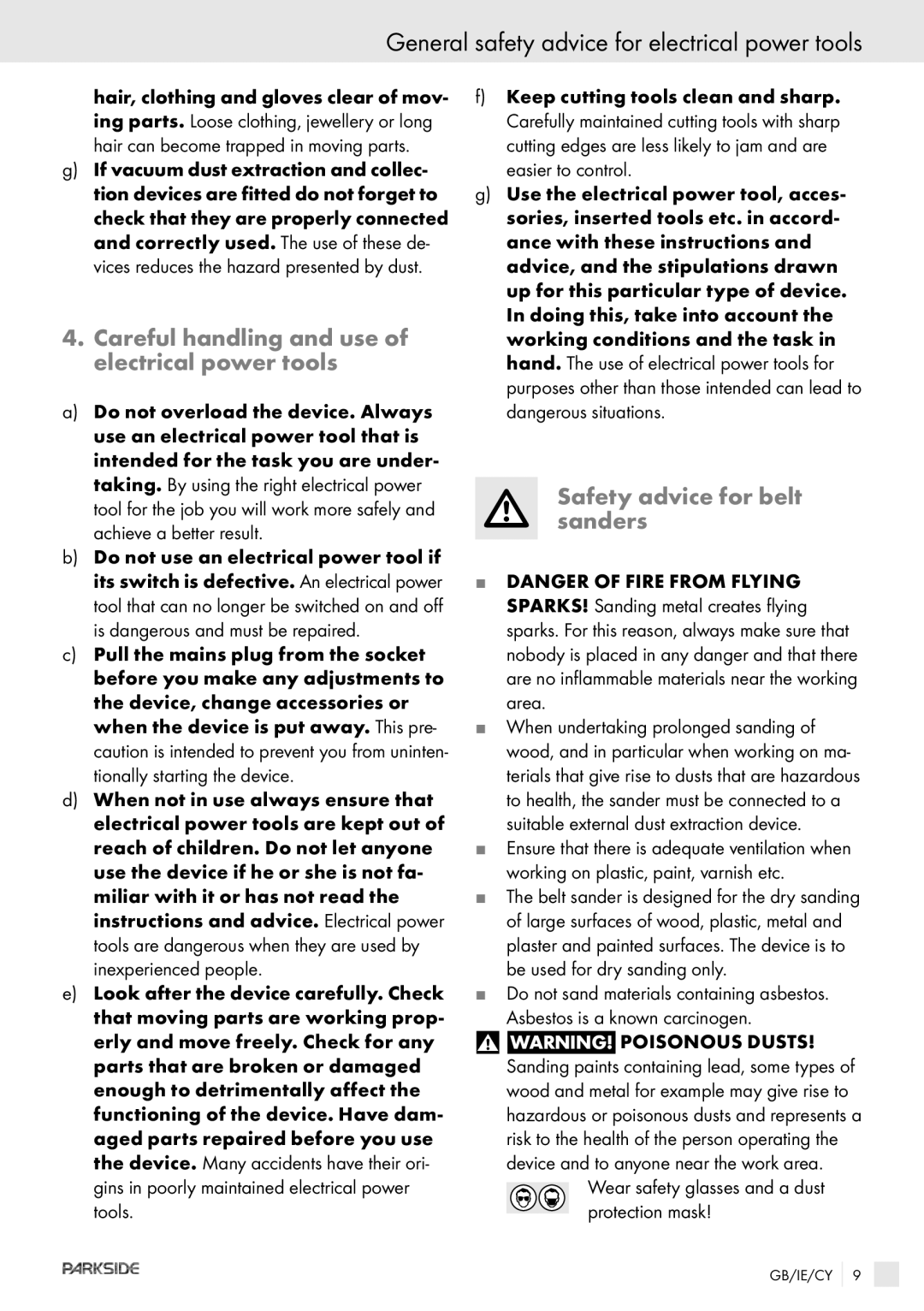
General safety advice for electrical power tools
hair, clothing and gloves clear of mov- ing parts. Loose clothing, jewellery or long hair can become trapped in moving parts.
g)If vacuum dust extraction and collec- tion devices are fitted do not forget to check that they are properly connected and correctly used. The use of these de- vices reduces the hazard presented by dust.
4.Careful handling and use of electrical power tools
a)Do not overload the device. Always use an electrical power tool that is intended for the task you are under- taking. By using the right electrical power tool for the job you will work more safely and achieve a better result.
b)Do not use an electrical power tool if its switch is defective. An electrical power tool that can no longer be switched on and off is dangerous and must be repaired.
c)Pull the mains plug from the socket before you make any adjustments to the device, change accessories or when the device is put away. This pre- caution is intended to prevent you from uninten- tionally starting the device.
d)When not in use always ensure that electrical power tools are kept out of reach of children. Do not let anyone use the device if he or she is not fa- miliar with it or has not read the instructions and advice. Electrical power tools are dangerous when they are used by inexperienced people.
e)Look after the device carefully. Check that moving parts are working prop- erly and move freely. Check for any parts that are broken or damaged enough to detrimentally affect the functioning of the device. Have dam- aged parts repaired before you use the device. Many accidents have their ori- gins in poorly maintained electrical power tools.
f)Keep cutting tools clean and sharp. Carefully maintained cutting tools with sharp cutting edges are less likely to jam and are easier to control.
g)Use the electrical power tool, acces- sories, inserted tools etc. in accord- ance with these instructions and advice, and the stipulations drawn up for this particular type of device. In doing this, take into account the working conditions and the task in hand. The use of electrical power tools for purposes other than those intended can lead to dangerous situations.
Safety advice for belt sanders
JDanger of fire from flying sparks! Sanding metal creates flying sparks. For this reason, always make sure that nobody is placed in any danger and that there are no inflammable materials near the working area.
JWhen undertaking prolonged sanding of wood, and in particular when working on ma- terials that give rise to dusts that are hazardous to health, the sander must be connected to a suitable external dust extraction device.
JEnsure that there is adequate ventilation when working on plastic, paint, varnish etc.
JThe belt sander is designed for the dry sanding of large surfaces of wood, plastic, metal and plaster and painted surfaces. The device is to be used for dry sanding only.
JDo not sand materials containing asbestos. Asbestos is a known carcinogen.
![]() Warning! POISONOUS DUSTS! Sanding paints containing lead, some types of wood and metal for example may give rise to hazardous or poisonous dusts and represents a risk to the health of the person operating the device and to anyone near the work area.
Warning! POISONOUS DUSTS! Sanding paints containing lead, some types of wood and metal for example may give rise to hazardous or poisonous dusts and represents a risk to the health of the person operating the device and to anyone near the work area.
Wear safety glasses and a dust protection mask!
GB/IE/CY
9
